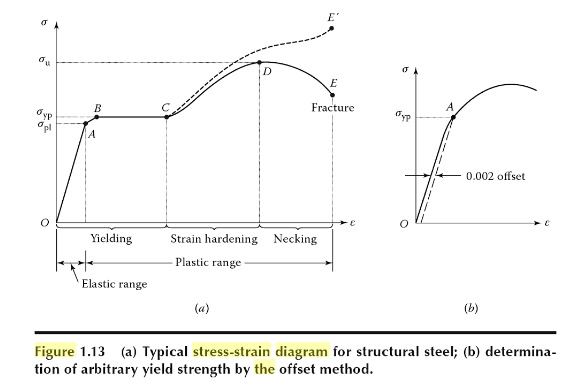Chapter: Mechanical : Strength of Materials : Stress, Strain and Deformation of Solids
True stress and true strain

True stress and true strain
In drawing the stress-strain diagram as shown in
figure 1.13, the stress was calculated by dividing the load P by the initial
cross section of the specimen. But it is clear that as the specimen elongates
its diameter decreases and the decrease in cross section is apparent during
necking phase. Hence, the actual stress which is obtained by dividing the load
by the actual cross sectional area in the deformed specimen is different from
that of the engineering stress that is obtained using undeformed cross
sectional area as in equation 1.1 Though the difference between the true stress
and the engineering stress is negligible for smaller loads, the former is
always higher than the latter for larger loads.

Similarly, if the initial length of the specimen is
used to calculate the strain, it is called engineering strain as obtained in
equation 1.9
But some engineering applications like metal forming
process involve large deformations and they require actual or true strains that
are obtained using the successive recorded lengths to calculate the strain.
True strain is also called as actual strain or natural strain and it plays an
important role in theories of viscosity.
TYPES OF STRESSES :
Only two basic stresses exists : (1) normal stress
and (2) shear shear stress. Other stresses either are similar to these basic
stresses or are a combination of these e.g. bending stress is a combination
tensile, compressive and shear stresses. Torsional stress, as encountered in
twisting of a shaft is a shearing stress.
Related Topics